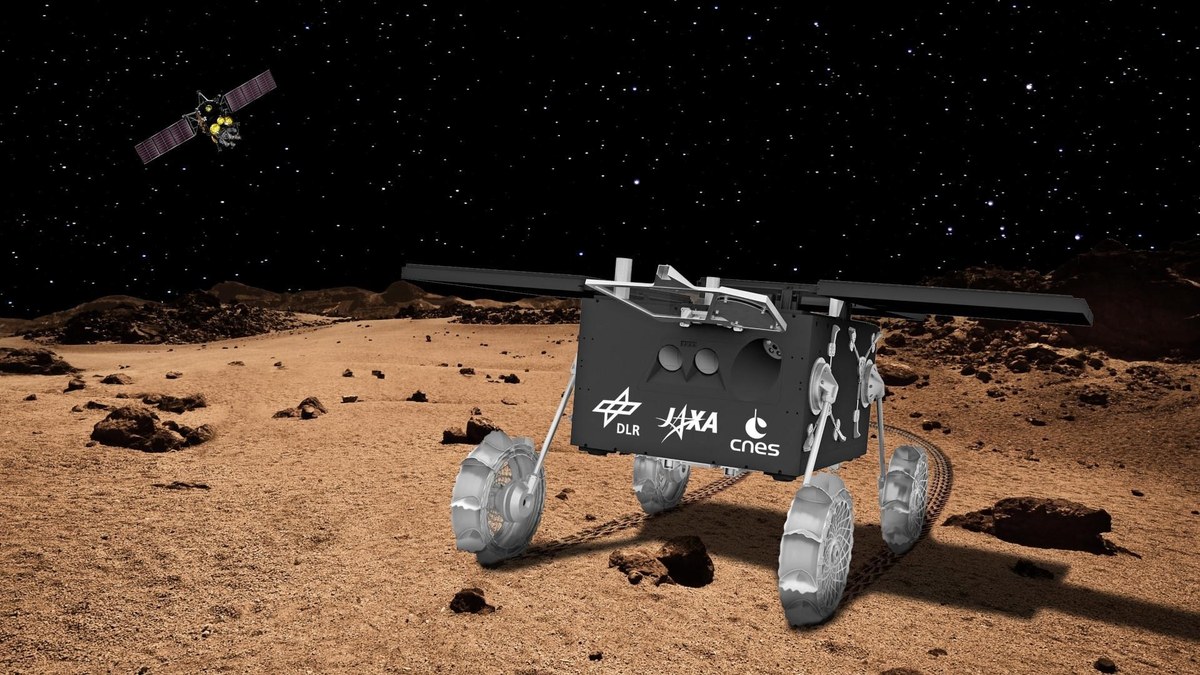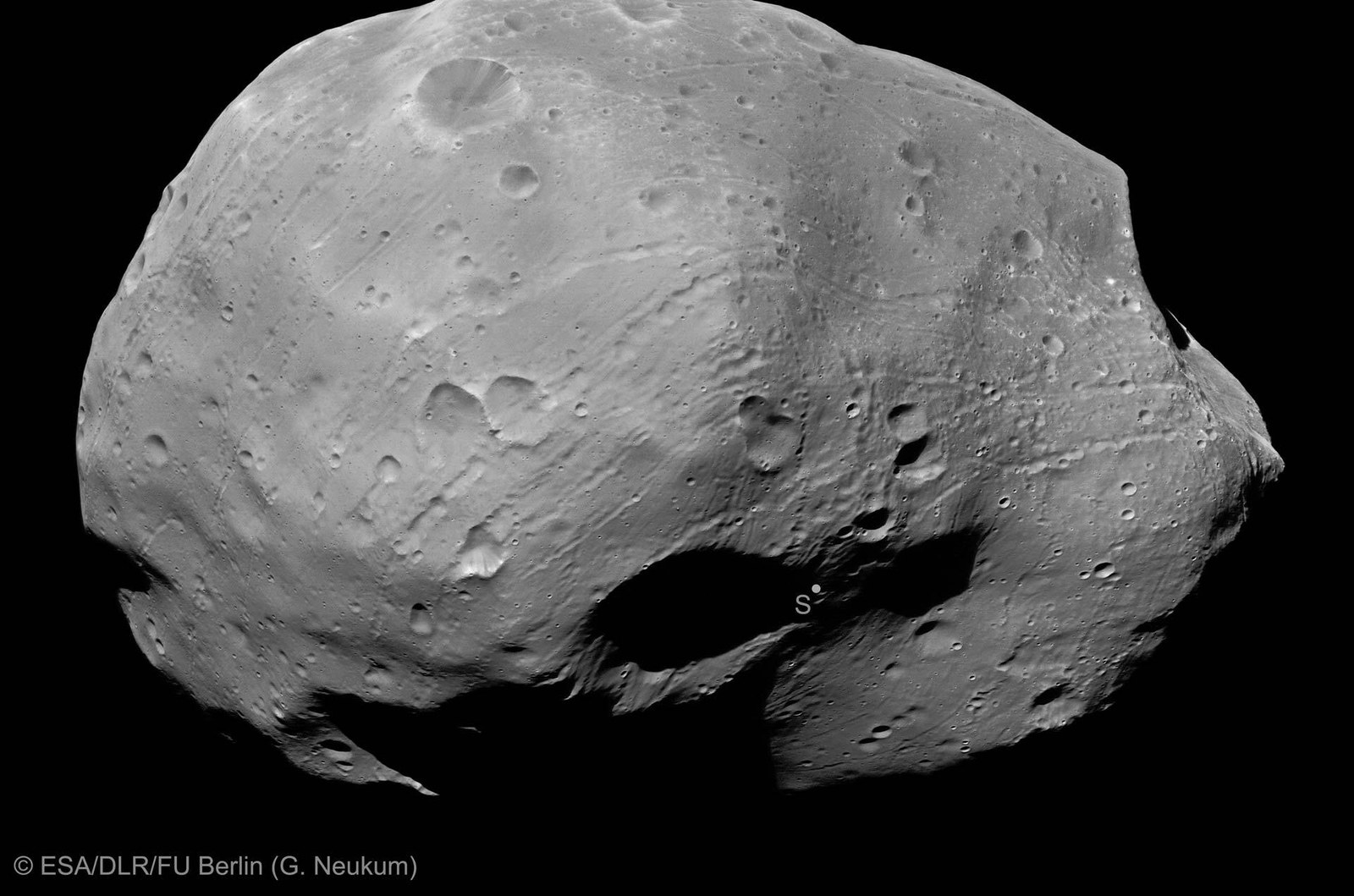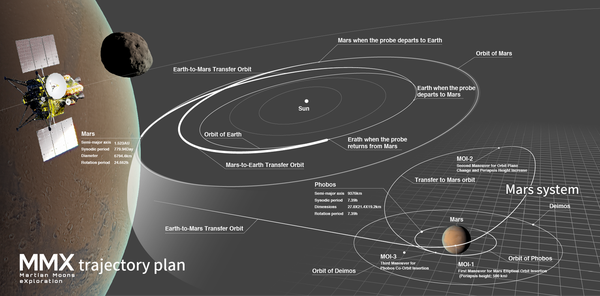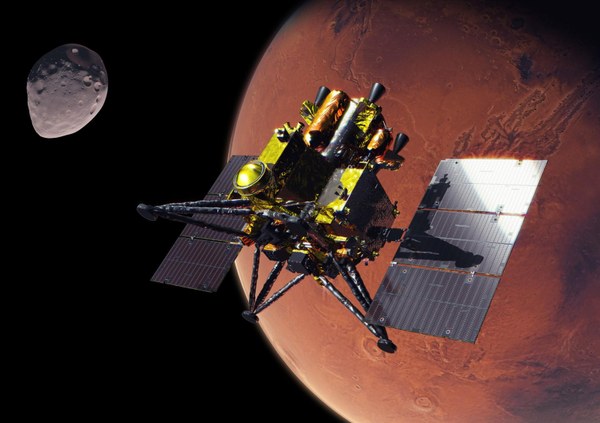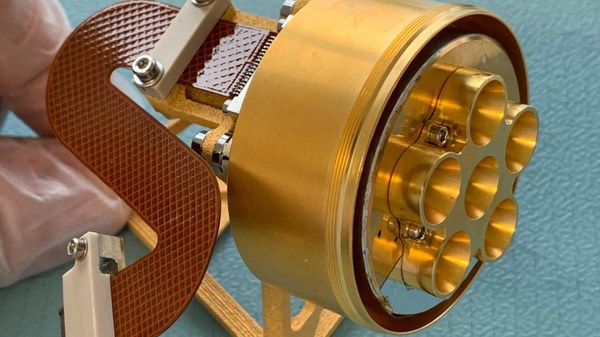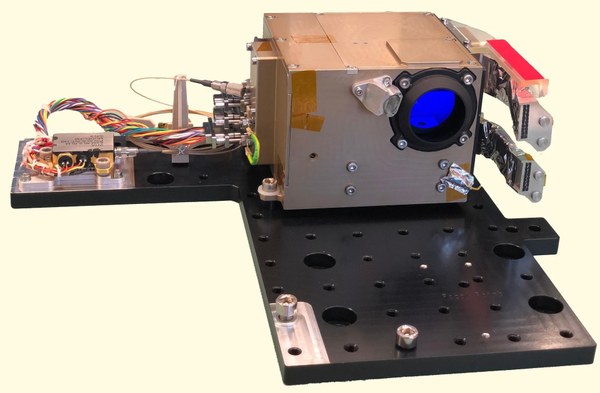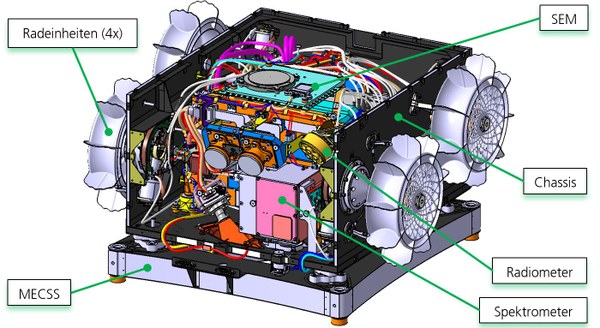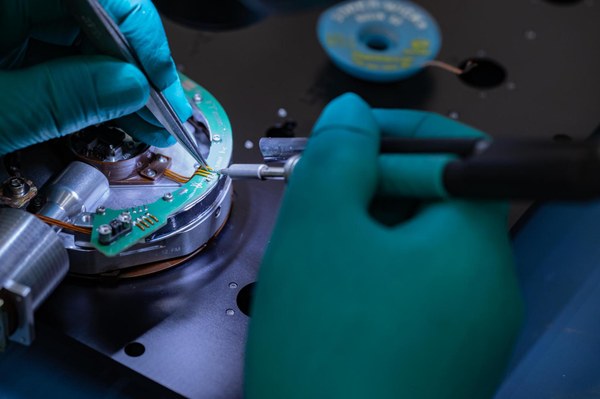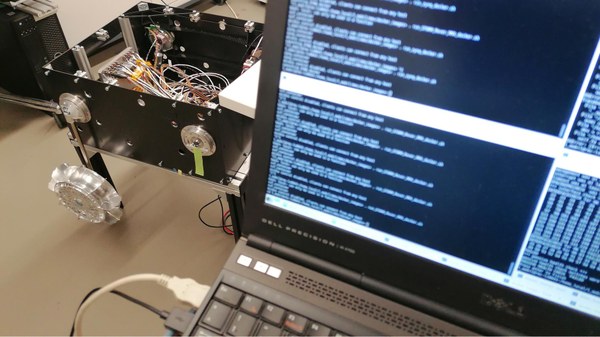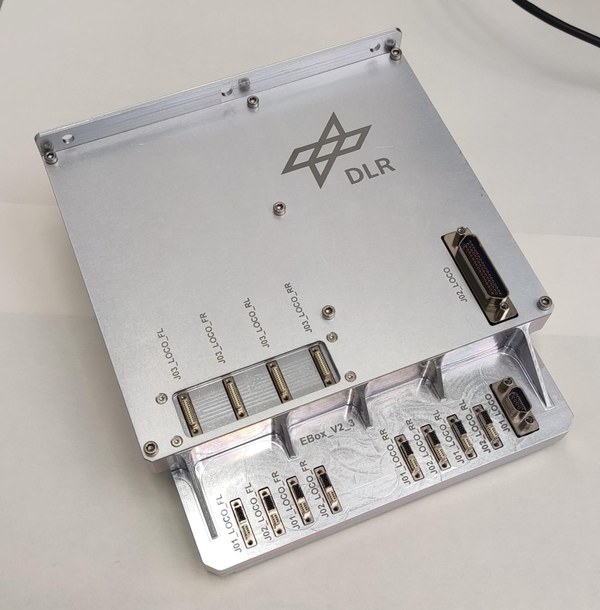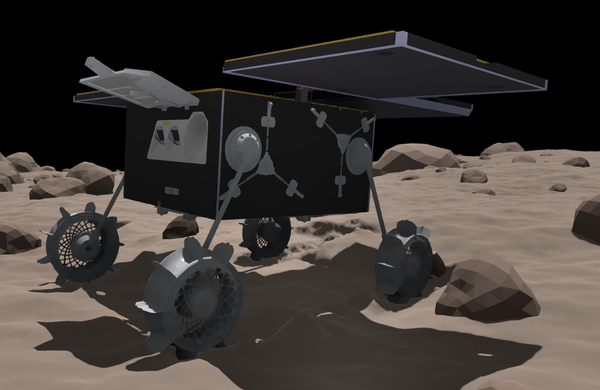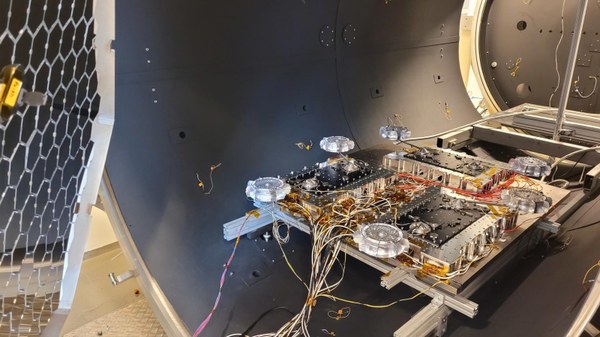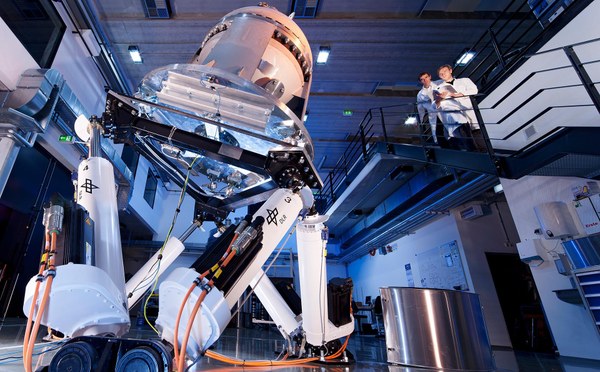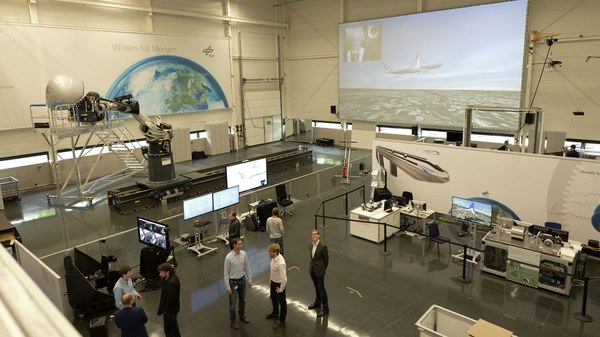MMX – Martian Moons eXploration
How did the moons form and what they are made of? This is the mystery that the international team of scientists wants to solve. Several US missions and the European Mars Express mission, launched in 2003, have already provided data and images from Mars orbit that have helped to observe the moons. However, there was no successful attempt to land on Phobos or Deimos to date. Little is known about their geological, mineralogical and geochemical properties.
The Japanese space agency JAXA's MMX space probe aims to change this: it will study the two martian moons in detail from orbit and collect material samples from Phobos for the first time during a short landing manoeuvre. Several grams of rock and regolith will be returned to Earth with the Return Module towards the end of the exploration for further scientific analysis. It will also carry the MMX rover from DLR and CNES and set it down on Phobos. The expected findings should help us to better understand the formation of the martian moons and the planets in the Solar System. The ambitious project is expected to be launched from the Japanese spaceport Tanegashima in 2026.
Europe's contribution to the mission – the MMX rover IDEFIX
The MMX rover will fulfil several tasks on Phobos: Firstly, it will provide important findings in preparation for the landing of the mother craft. Secondly, it will analyse the surface composition and texture at selected locations.
DLR and the French space agency CNES are working closely together on the design and construction of the rover. Eight DLR institutes from five locations are contributing to the rover: The Institute of Robotics and Mechatronics is responsible for the overall project management and – together with the Institute of Space Systems – for systems engineering. In addition, the Institute of Robotics and Mechatronics developed a navigation pipeline to navigate the rover autonomously on the moon's surface.
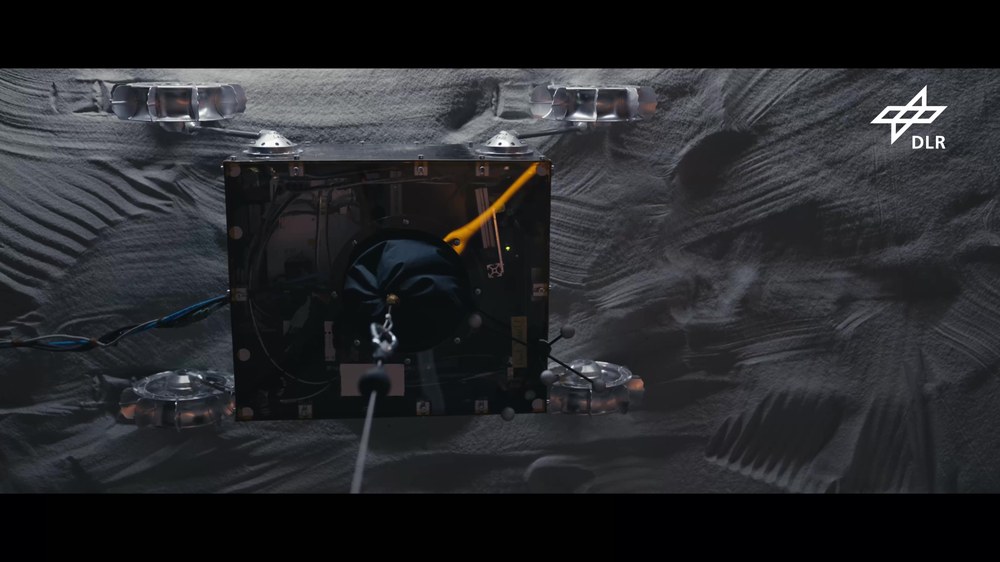
Video: Testing, assembly and preparation of the Franco-German rover IDEFIX for the MMX mission
Your consent to the storage of data ('cookies') is required for the playback of this video on Quickchannel.com. You can view and change your current data storage settings at any time under privacy.
CNES/DLR/JAXA (ASTERIX® OBELIX® IDEFIX® © Année LES EDITIONS ALBERT RENE / GOSCINNY-UDERZO)
The carbon structure was developed by the DLR Institute of Lightweight Systems. The DLR Institute of System Dynamics and Control developed extensive simulations of the condition of the Phobos surface and the safe locomotion of the rover. DLR's rover component was integrated and tested under realistic conditions at the Institute of Space Systems in Bremen. The DLR Institute of Planetary Research contributed the miniRAD radiometer and the DLR Institute of Optical Sensor Systems the RAX Raman spectrometer. The DLR Microgravity User Support Center (MUSC) in Cologne, together with the Université Côte d'Azur (France), is the scientific lead for the rover and is responsible for payload management.
CNES is making significant contributions with camera systems for spatial orientation and exploration on the surface as well as for the investigation of mechanical ground properties. CNES is also developing the rover's central service module, including the on-board computer and the power and communication system. Final integration and testing of the rover will take place at CNES in Toulouse. After the launch of the MMX mission, the rover will be operated by control centres at DLR‘s MUSC in Cologne and CNES in Toulouse (France).
Mission timeline
MMX is expected to lift off from Tanegashima Space Center in 2026 on board an H-3 launch vehicle. After approximately one year of flight, MMX will reach Mars and enter its orbit. Then the exploration module's eight scientific instruments will begin mapping and characterising the surfaces of Phobos and Deimos.
The rover is expected to land on Phobos in early 2029. The rover will descend from a height of 40 to 100 metres above the surface and after landing – and presumably a few small bounces – it will upright itself and be ready for use. The measurement phase will then begin. During these three months, the rover will approach various targets that are of interest for scientific analysis.
At the end of the mission, the mother craft will collect soil samples, taking into account the knowledge gained by the rover. These will be brought back to Earth with the return module. They are expected to arrive in 2031 for further analysis in terrestrial laboratories. The Japanese space agency JAXA is ideally suited for such a demanding task: in 2020, the Hayabusa2 mission succeeded in bringing material from the asteroid Ryugu back to Earth. DLR and CNES were also involved in Hayabusa2 with the MASCOT lander.
News
Multimedia
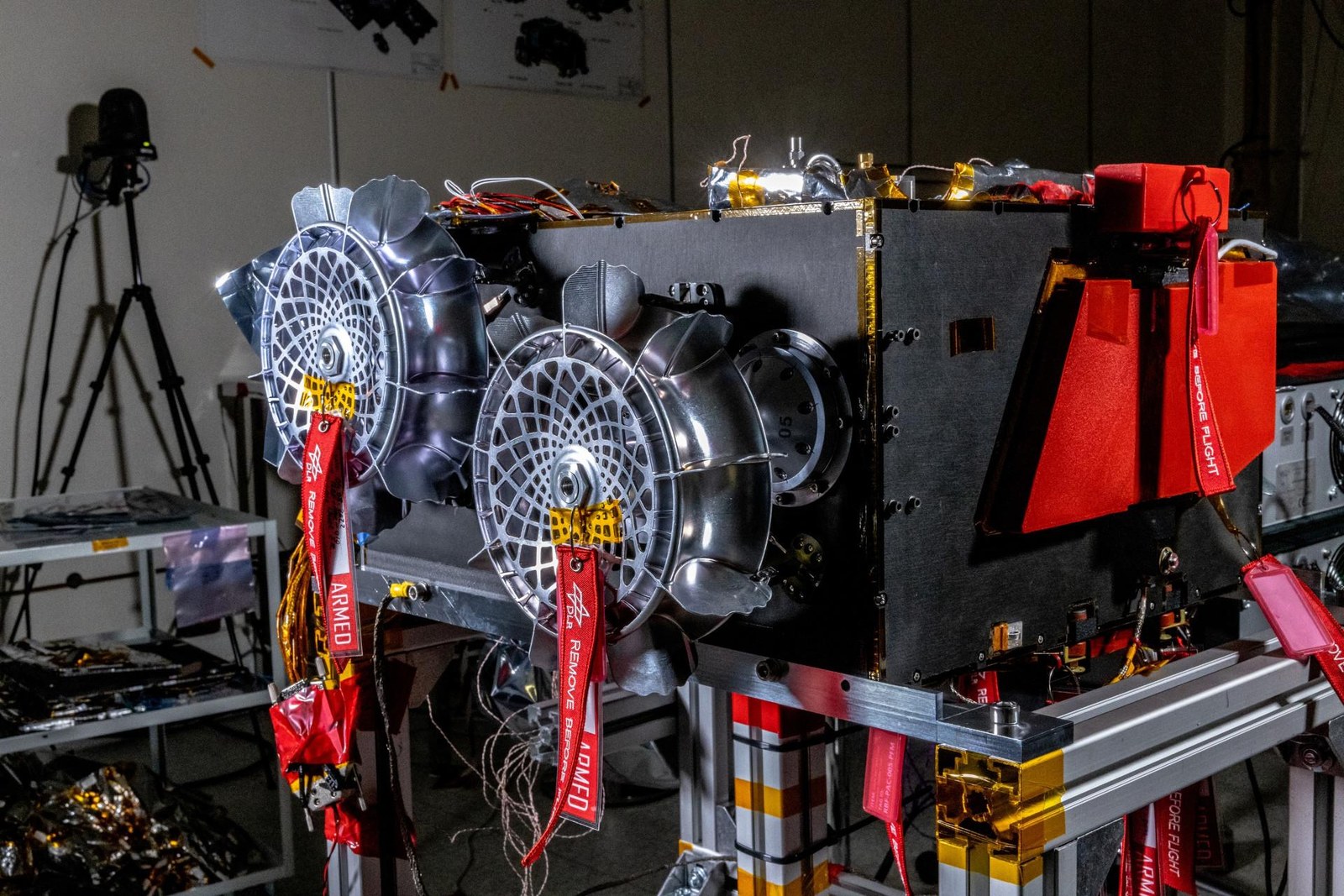

Présidence de la République

